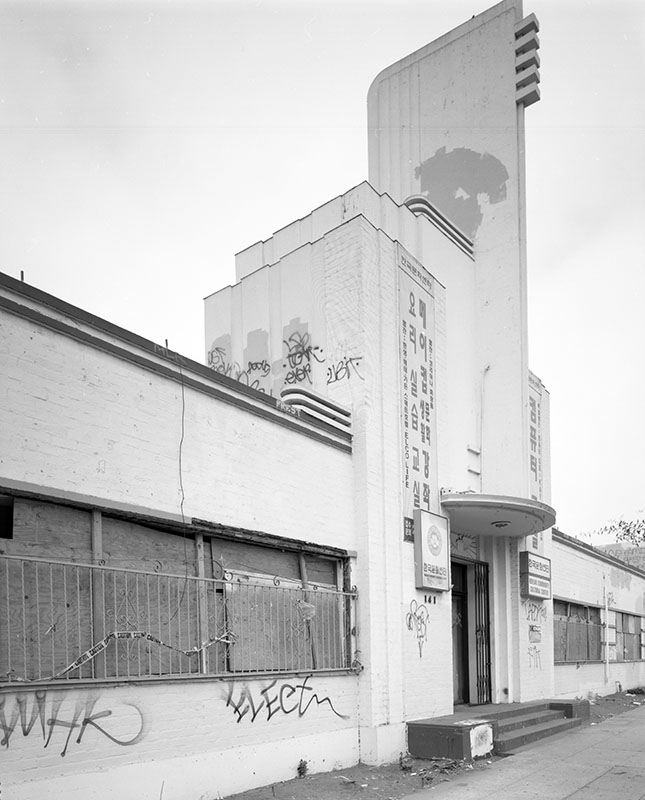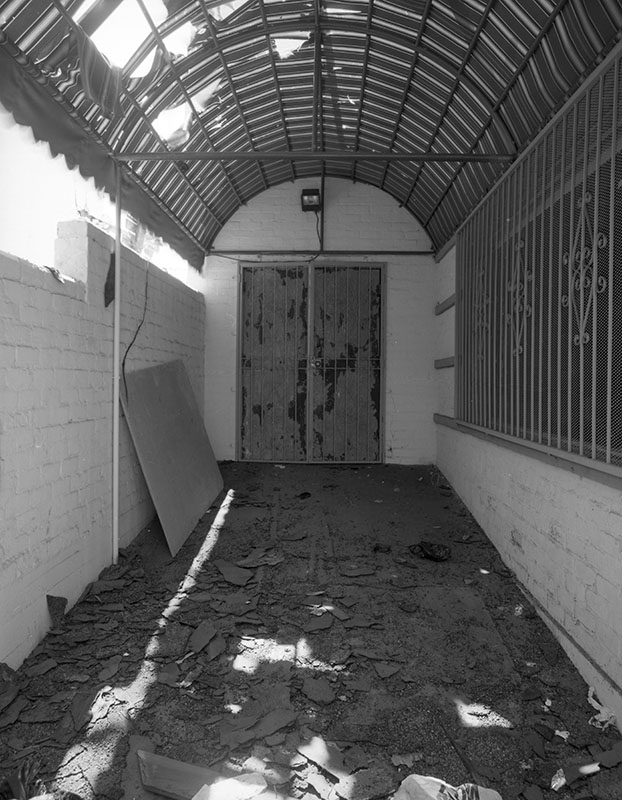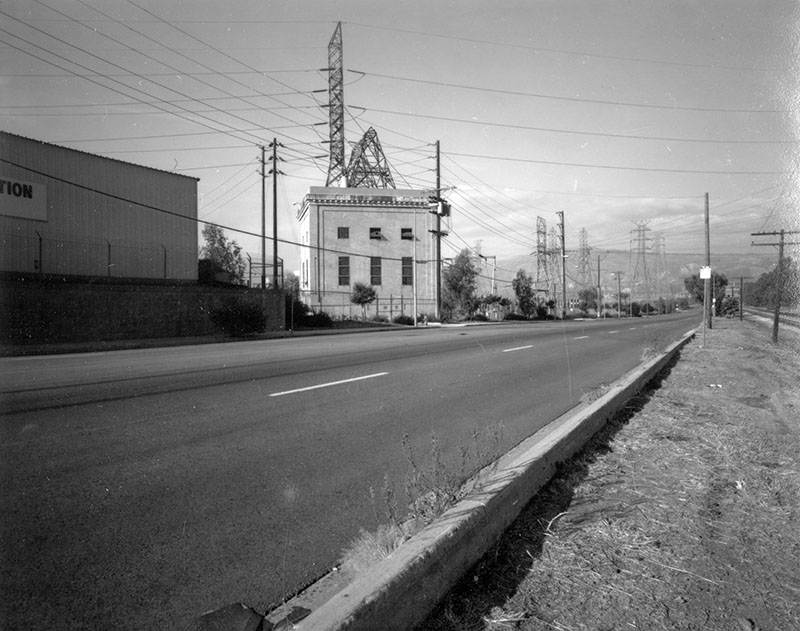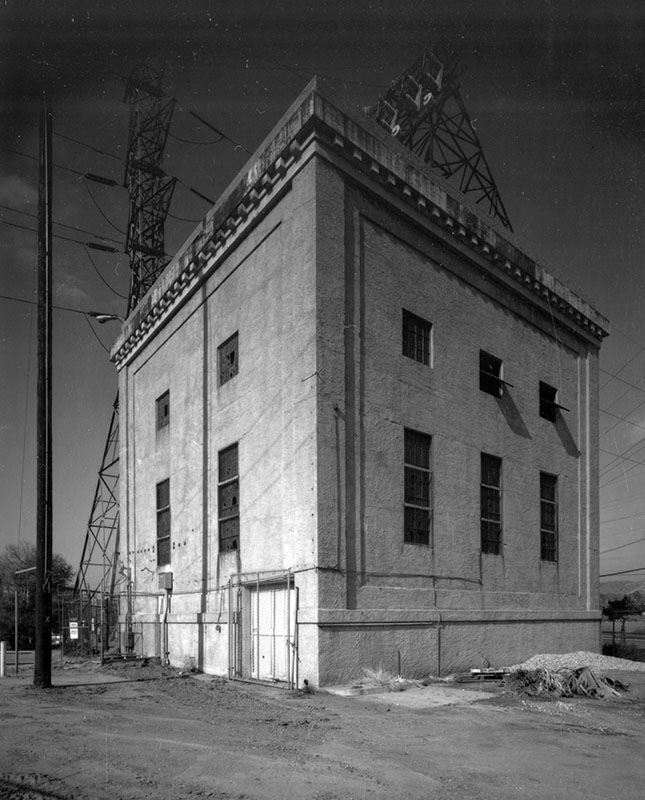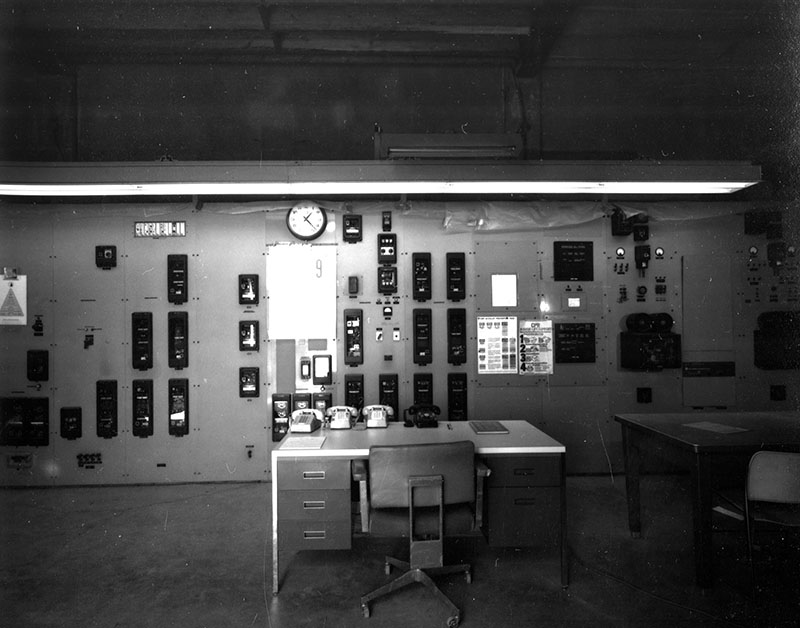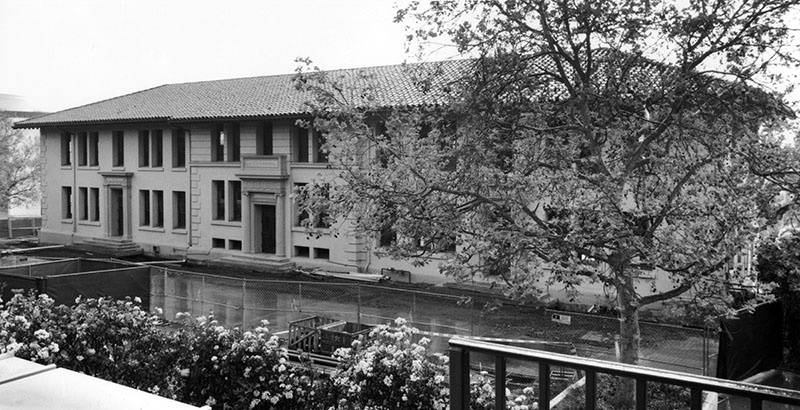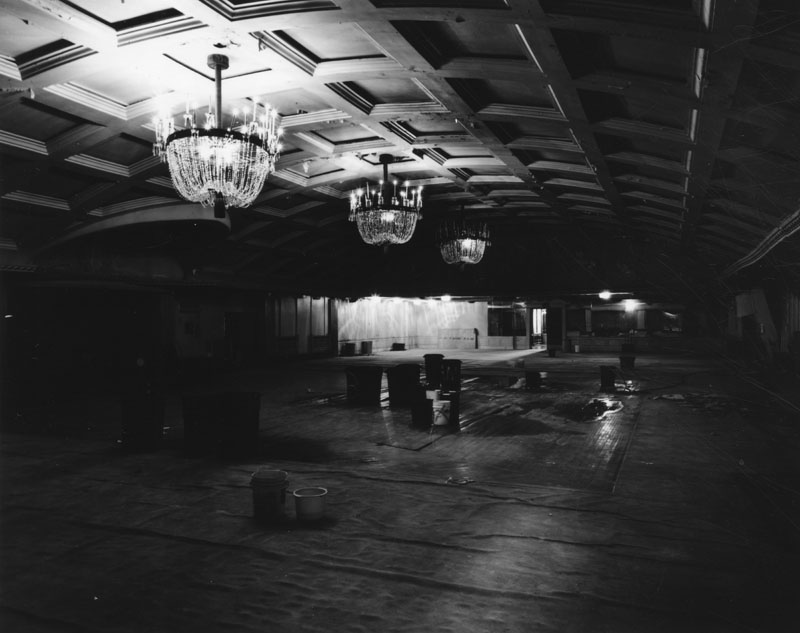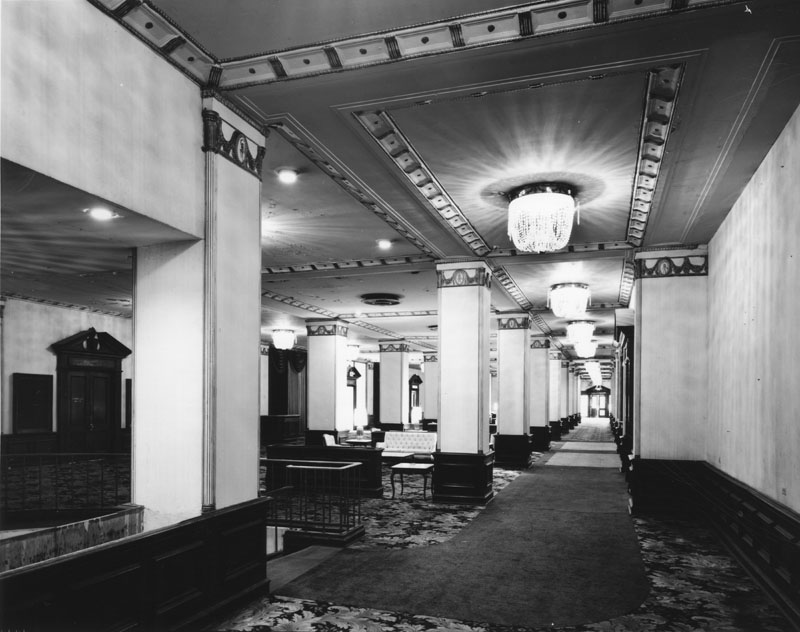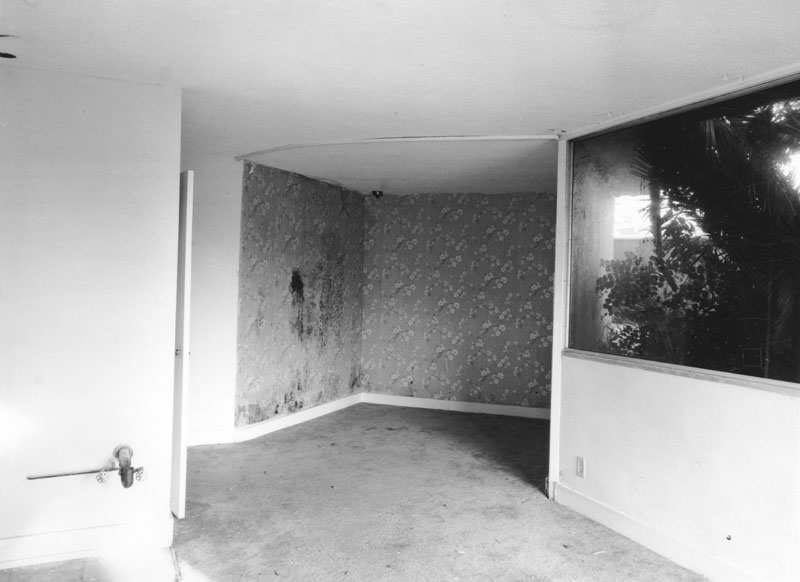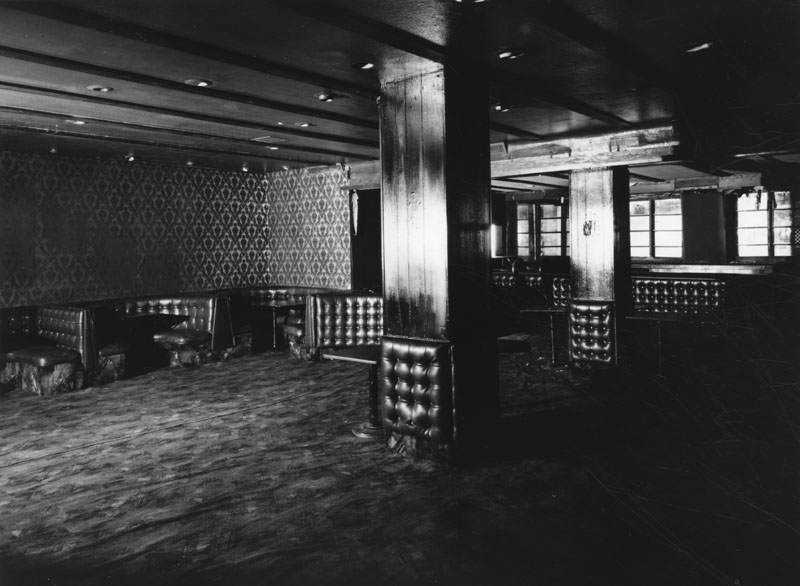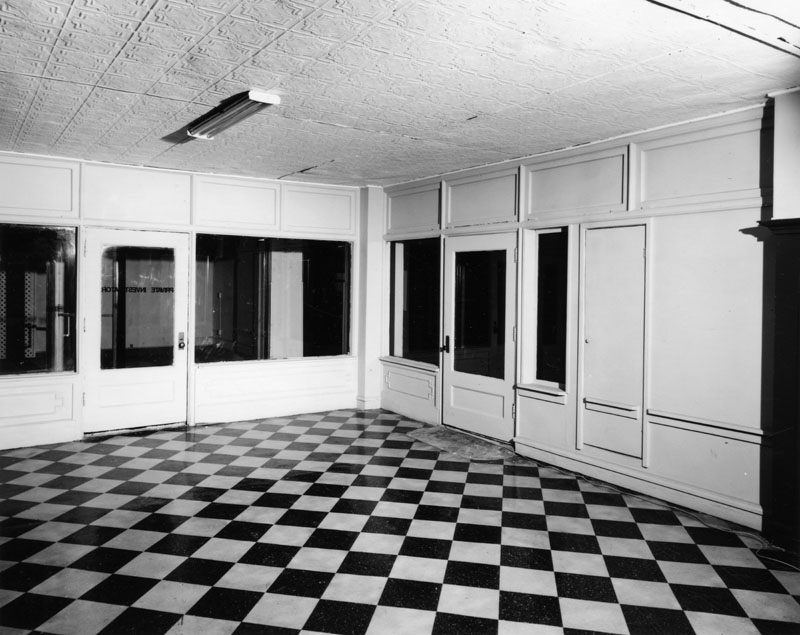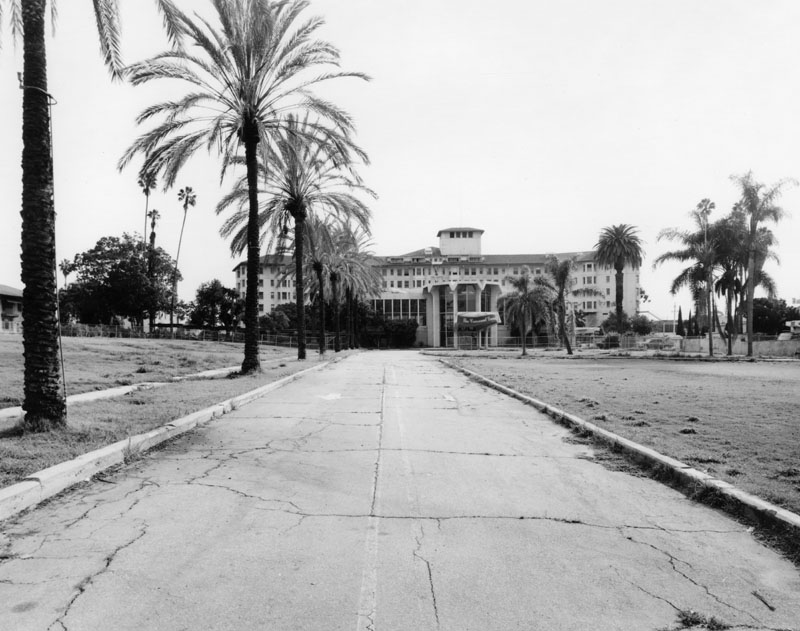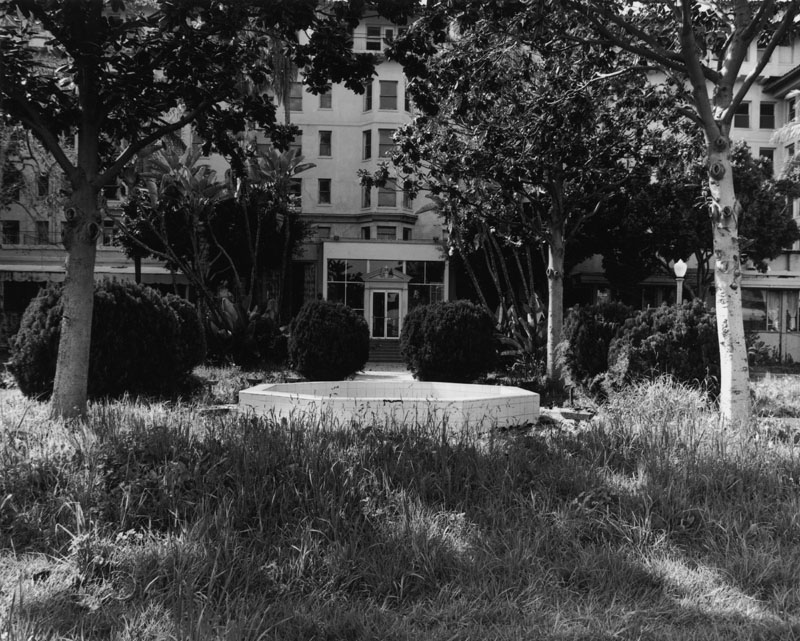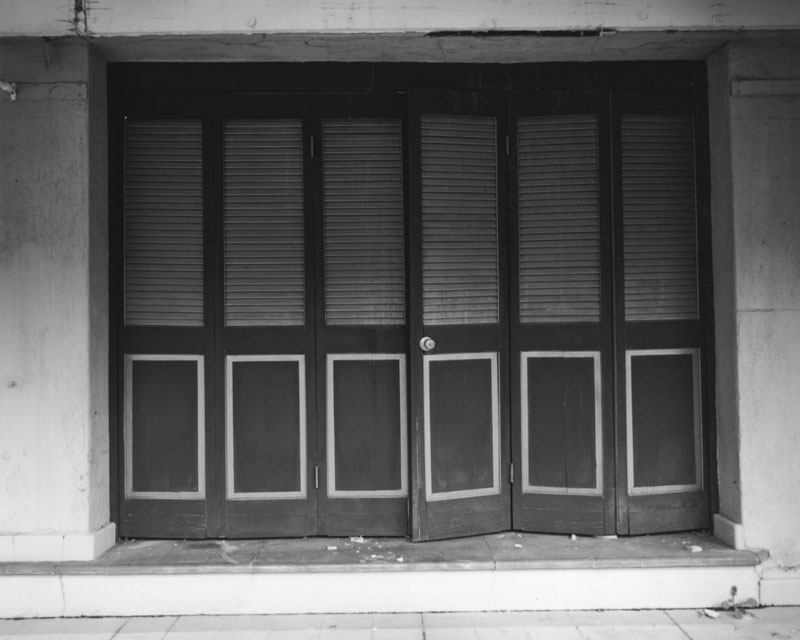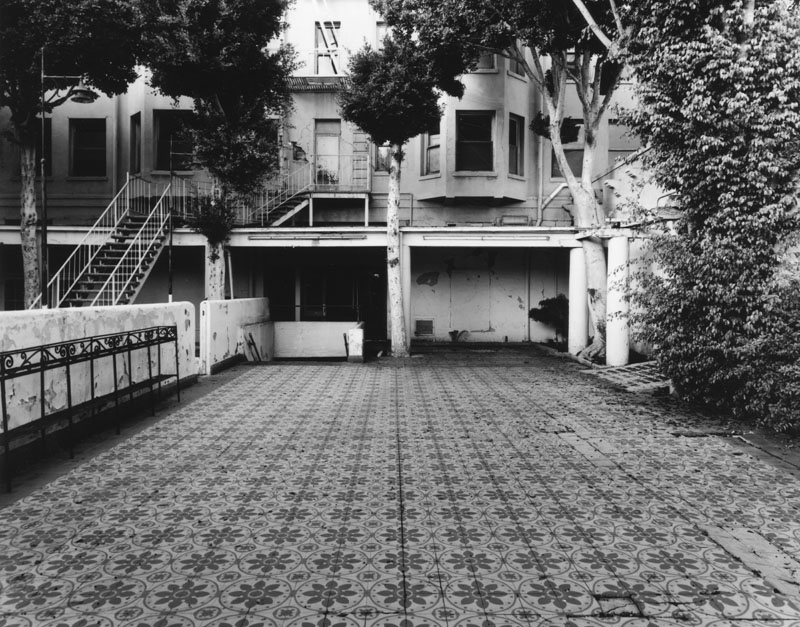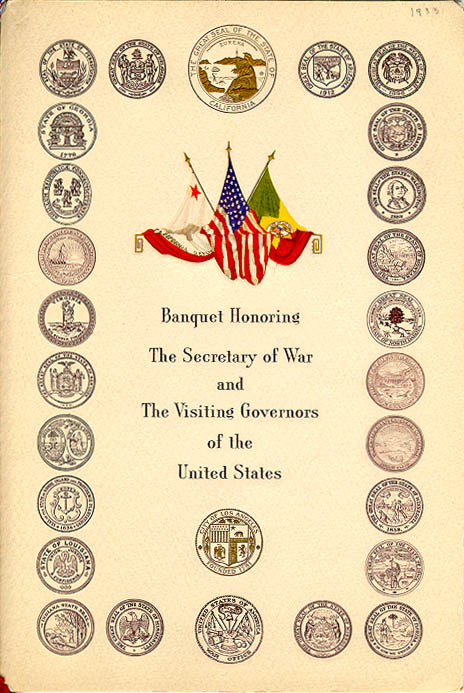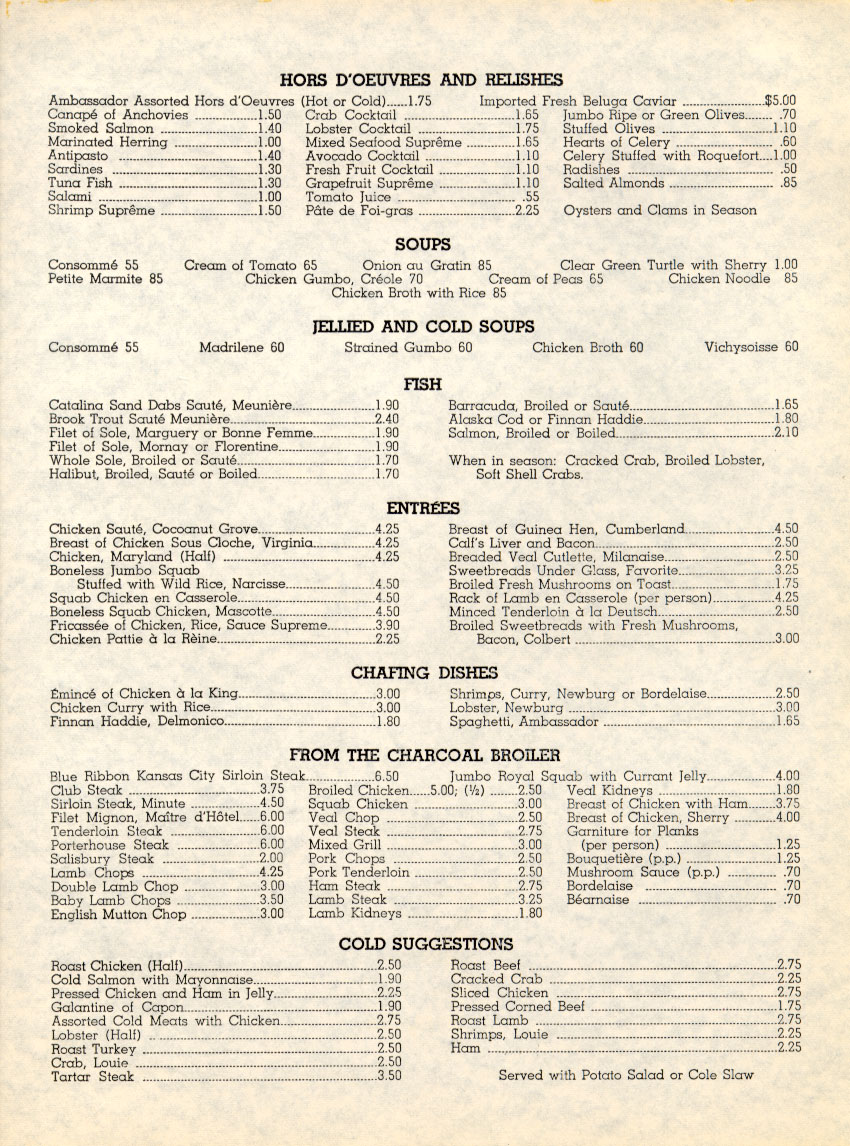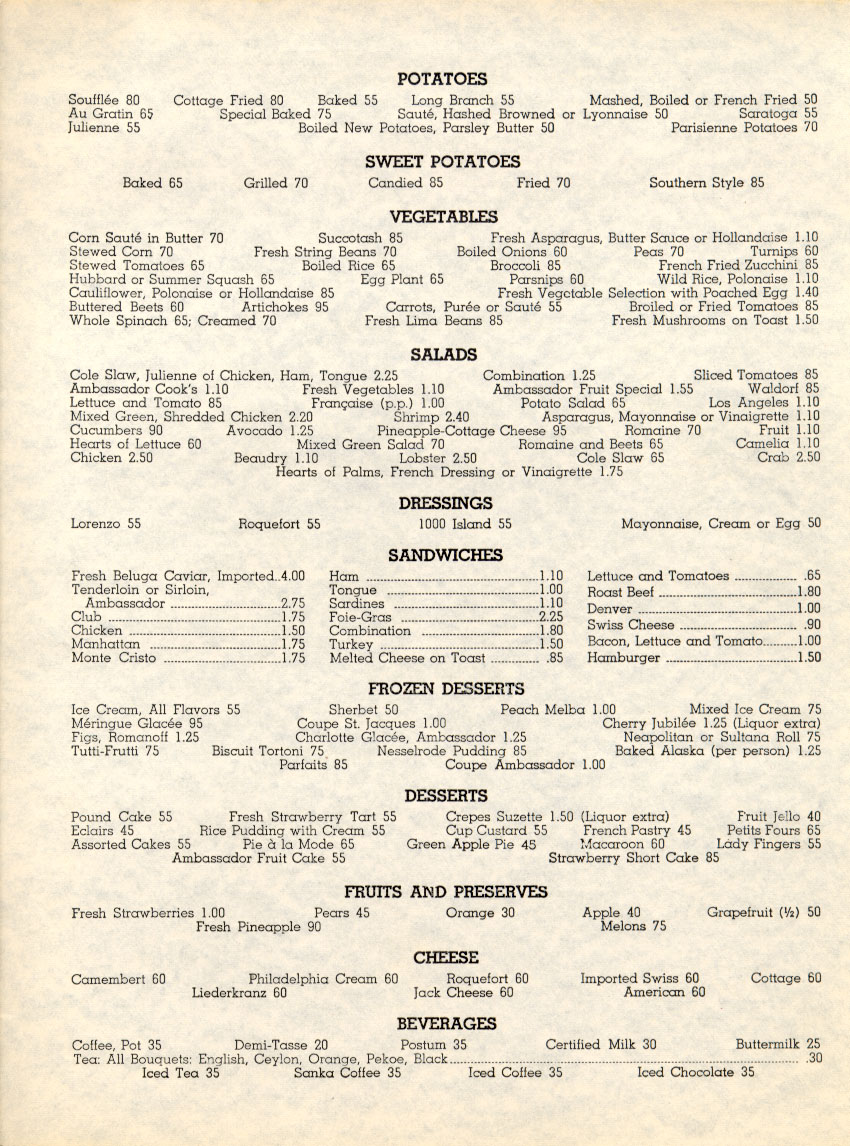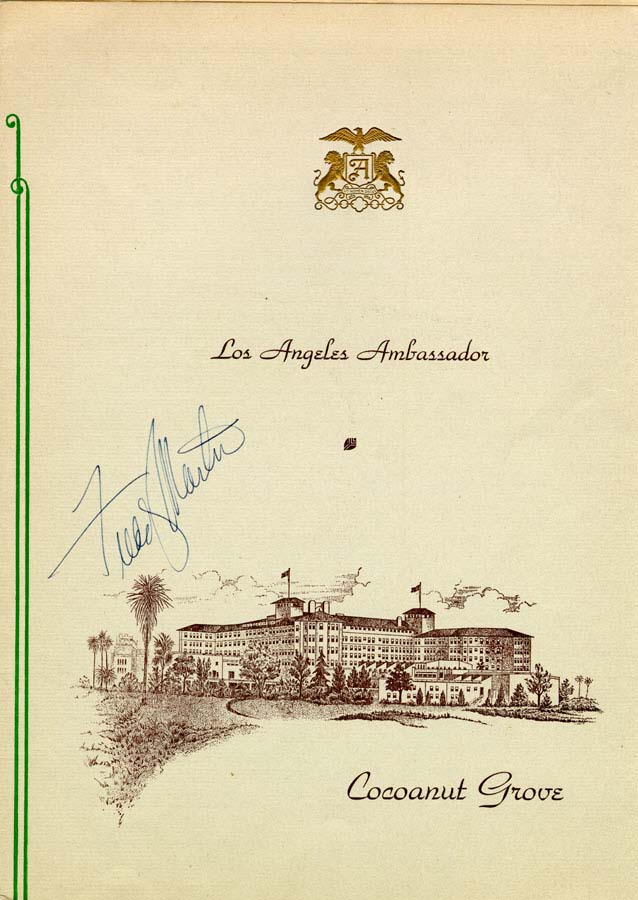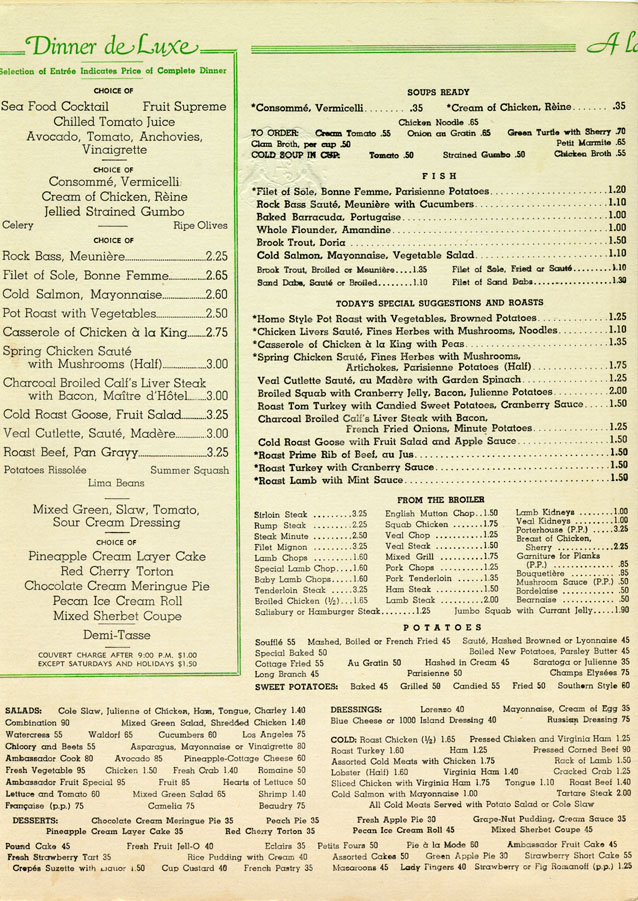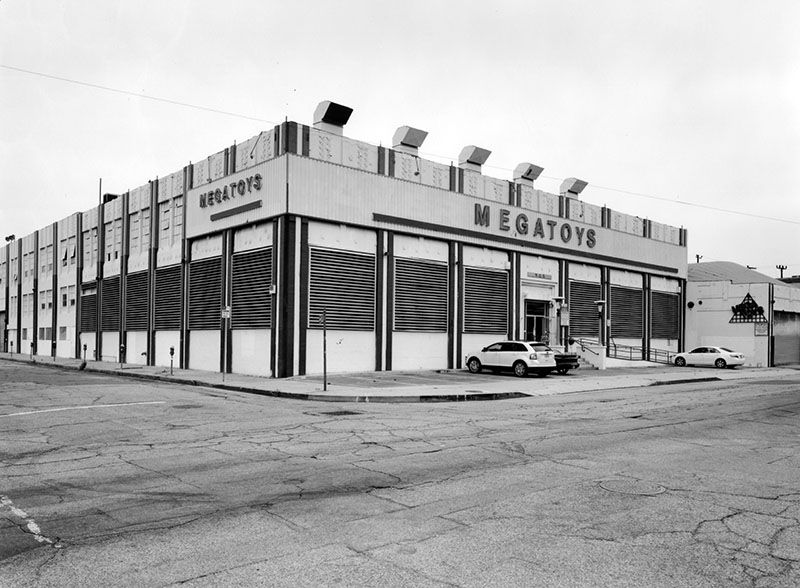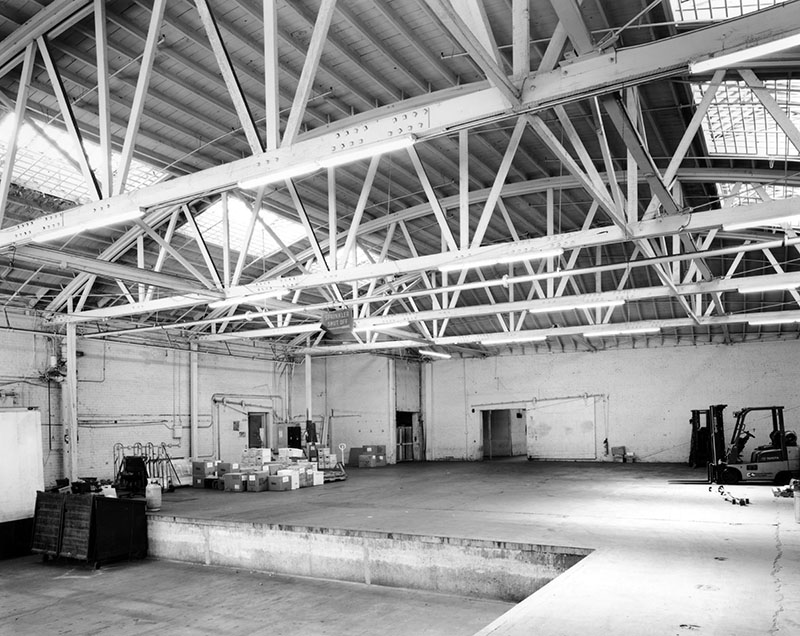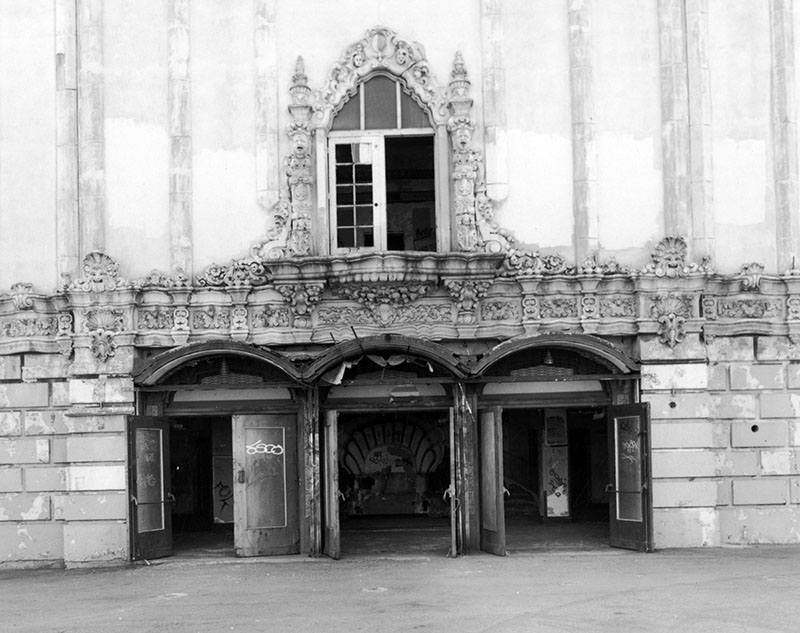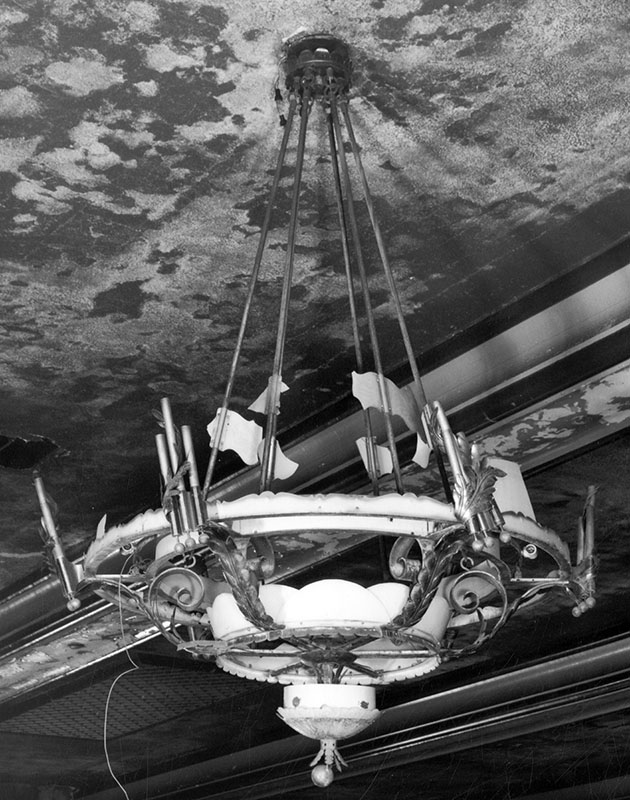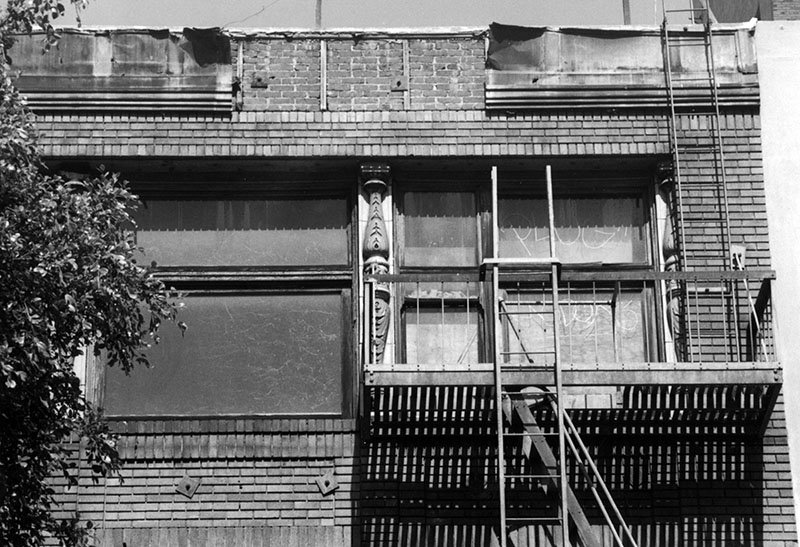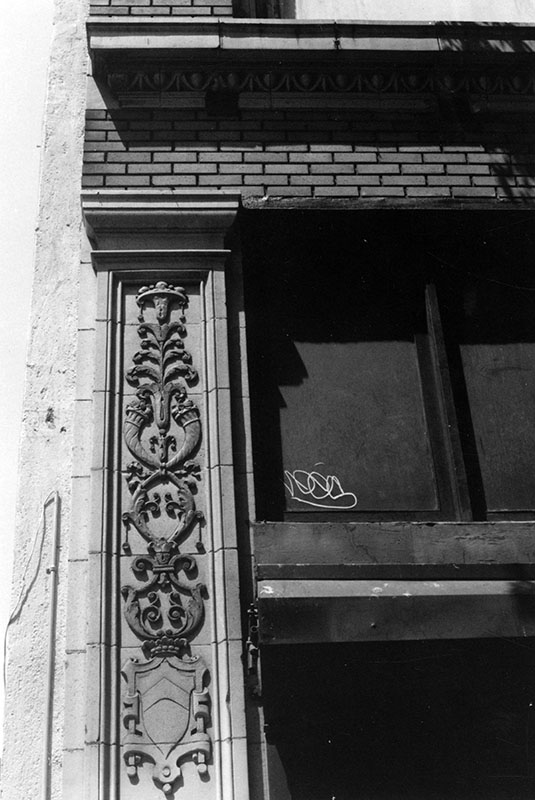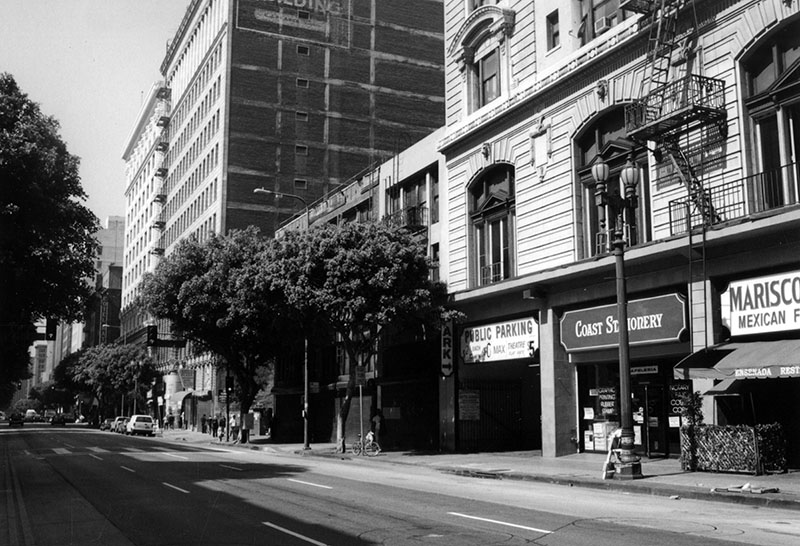The photo collection of the Los Angeles Public Library contains many photos taken for the Historic American Buildings Survey (HABS), the nation’s first federal preservation project. HABS created an archive of drawings and historical reports plus black and white photos documenting the country’s buildings and built environments. The following photos (with captions below each photo) display examples of the unique architecture to be found here in Los Angeles.
KEHE/KFI Radio Broad Studio
The KEHE/KFI studio was built in 1936 and designed in the Streamline Moderne (also referred to as Art Moderne) architectural style, utilizing long lines and aerodynamic curves to create a streamlined and modern look. The KEHE studio was originally constructed for Hearst Radio, Inc. but was sold in 1939 to Earle C. Anthony who took KEHE off the air and ran station KFI in the studio until 1975. The building served various purposes for the local Koreatown community before it was demolished in 2003. (Note: The scrolled grilles over the windows and doors were not an original part of the building but were added in later years for security purposes.) All photos of the radio station were taken in 2004 by photographer and Photo Friends Board Member Tom Zimmerman for the Historic American Buildings Survey.
Southeast corner of KEHE/KFI radio broadcast studio on North Vermont Avenue
Main entrance and tower of KEHE/KFI facing northwest
Southern side entrance of KEHE/KFI studio facing westward
OLIVE SWITCHING STATION
Located on San Fernando Road, the two-story Olive Switching Station was built between 1916 and 1917 at the mid-point of the electric transmission line that ran from San Francisquito power plant No. 1 to the central receiving station in Los Angeles. This facility of the LADWP (Los Angeles Department of Water and Power) made it possible to repair single circuits without disrupting or diminishing electric service, thus providing reliable utility service to the greater Los Angeles area. The original station has been demolished. All photos of the Olive Switching Station shown below were photographed in 1994 by photographer Bill Agee for the Historic American Buildings Survey.
View of the northeast side of the Olive Switching Station
from the north side of San Fernando Road facing southwest
View of the east corner of the Olive Switching Station
from the Los Angeles Department of Water and Power lot
View of first room on the first floor and main control panel
of the Olive Switching Station
Swan Hall, Occidental College
Architects Myron Hunt and H.C. Chambers laid out the original master plan for Occidental College in 1914, with an emphasis on healthy and comfortable living. The campus featured many open air spaces, verandas, fireplaces, and assorted greenery. (It was said that Hunt would walk around the campus dropping eucalyptus seeds as he walked.) Swan Hall was designed and built as a men’s dormitory. In 1960, Swan Hall was remodeled and converted from living quarters into administrative offices. In 2011, Swan Hall underwent an expansion that more than doubled its size. The photos below were all taken in 2011 by photographer and Photo Friends Board Member Tom Zimmerman for the Historic American Buildings Survey.
East facade of Swan Hall (with fence surrounding building
during maintenance) as viewed from the northeast
North entrance on Swan Hall‘s east facade
This is the third part of a three-part feature on the photos of the Historic American Buildings Survey.


